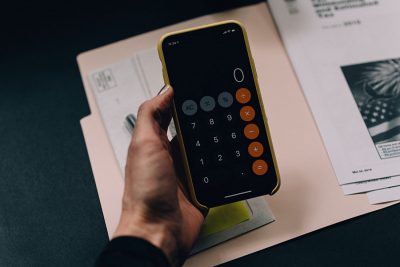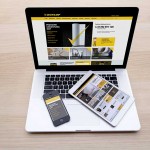Future-proof finances

Many people who are self-employed don’t give much thought to their tax return until the 31 January deadline is looming. In fact, 30,000 people won’t file until minutes before the deadline, with submissions peaking 17 seconds before the cut-off. Yet there’s more to your tax return than the annual submission and working with time in hand can help boost your bottom line.
For many, this month marks the half-year point in the financial year, so it’s a good time to be thinking about getting your finances into shape.
Mike Parkes, Technical Director at GoSimpleTax, looks at what you can be doing as a self-employed painter and decorator between now and 31 January to ensure that you don’t become one of the thousands filing late and missing opportunities to minimise your tax bill.
Going solo
If you’re just starting out on your own, the good news is you have a blank canvas on which to build your business and can set good habits from the off. Despite the 101 things to think about when setting up a business, getting to grips with your tax responsibilities is one to bring to the top of the list.
You’ll need to register with HMRC when you start trading, and plan-ahead to submitting your annual tax return which has an ultimate deadline of 31 January each year. The latest you can register without facing a penalty is by 5 October, after the end of the tax year during which you became self-employed. The tax year runs from 6 April to 5 April of the following year.
One of the easiest ways to stay on top of your taxes is to input all your information into a tax calculation app as soon as you receive it. This limits the chances of you forgetting anything later on, and you won’t have the mammoth task of finding and entering all of the built-up data in January.
If you travel for work, paper receipts can be easily photographed and uploaded onto a platform – making it a much simpler step to go digital and paperless.
Today’s expenses and tomorrow’s nest egg
If you record all your income and business expenditure as it happens, your self-assessment will be more-or-less hassle-free. This process also allows for better business planning and could even highlight how your pricing stacks up against the work and materials you need to get the job done.
Making tax digital
HMRC is working towards a paperless system through its Making Tax Digital transformation. For those who are self-employed, this means keeping digital records and using software to complete tax returns until the point at which keeping paper records won’t meet the requirements of tax legislation. Making Tax Digital for VAT-registered businesses came into force on 1 April 2019, with income tax and corporation tax set to follow to suit.
If you’re starting from scratch, it would be wise to be digital from day one but even if you have been self-employed for some time, a digital overhaul probably isn’t as over-facing as it first appears. The product you use to submit digital tax returns needs to be compatible with HMRC. GoSimpleTAX does these calculations for you and provides a real-time picture of your financial situation along with tax-saving suggestions.
Forecasting what you owe will allow you to put plans in place for a more prosperous 2020.







